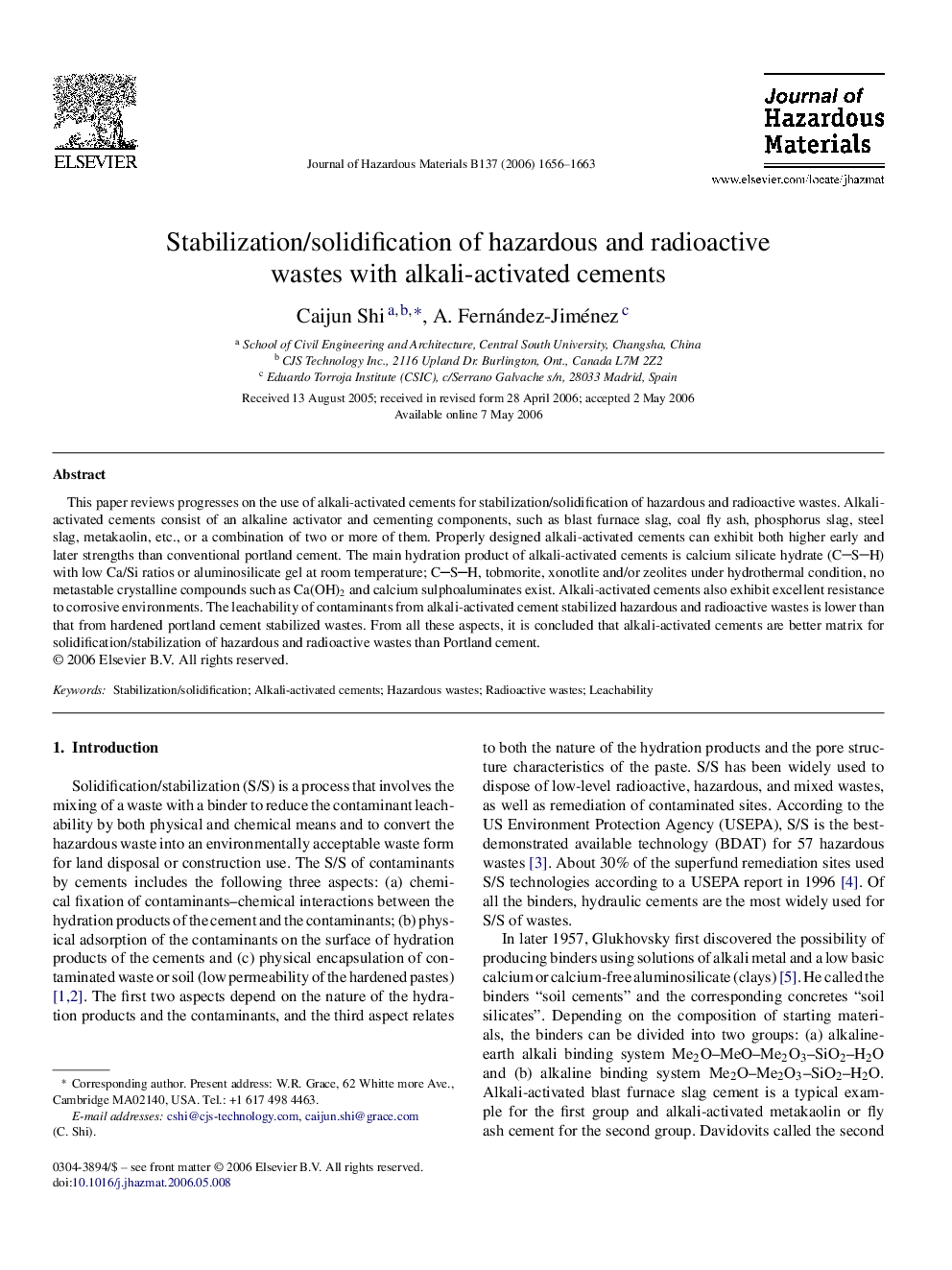| Article ID | Journal | Published Year | Pages | File Type |
|---|---|---|---|---|
| 585133 | Journal of Hazardous Materials | 2006 | 8 Pages |
Abstract
This paper reviews progresses on the use of alkali-activated cements for stabilization/solidification of hazardous and radioactive wastes. Alkali-activated cements consist of an alkaline activator and cementing components, such as blast furnace slag, coal fly ash, phosphorus slag, steel slag, metakaolin, etc., or a combination of two or more of them. Properly designed alkali-activated cements can exhibit both higher early and later strengths than conventional portland cement. The main hydration product of alkali-activated cements is calcium silicate hydrate (CSH) with low Ca/Si ratios or aluminosilicate gel at room temperature; CSH, tobmorite, xonotlite and/or zeolites under hydrothermal condition, no metastable crystalline compounds such as Ca(OH)2 and calcium sulphoaluminates exist. Alkali-activated cements also exhibit excellent resistance to corrosive environments. The leachability of contaminants from alkali-activated cement stabilized hazardous and radioactive wastes is lower than that from hardened portland cement stabilized wastes. From all these aspects, it is concluded that alkali-activated cements are better matrix for solidification/stabilization of hazardous and radioactive wastes than Portland cement.
Keywords
Related Topics
Physical Sciences and Engineering
Chemical Engineering
Chemical Health and Safety
Authors
Caijun Shi, A. Fernández-Jiménez,
